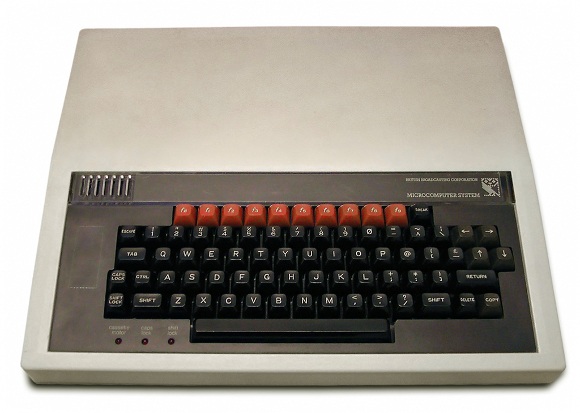Articles
- The 20th century
- Key events
- Making sense of the tangible world
- Health and Welfare
- Space exploration
- Scientific advancement: computers, technology & textiles
- Monarchy
- Democracy & social mobility
- Transport and leisure
- Colonialism & post-colonialism
- Sexuality, marriage, parenthood & divorce
- Income & consumerism
- Humans and the environment
- Educational context
- Mass culture & entertainment
- The world of work
- Making sense of the intangible world
Scientific advancement: computers, technology & textiles
The development of computersMicrochipsCommunication technologyTelephonesRadarEmailThe materials around usPlasticsFoam rubberSynthetic fibres
The development of computers
Mechanical computing devices were developed before the twentieth century. By the 1920s, they could be used as, for example, calculators, cash registers and accounting machines. The 1930s and 1940s saw significant developments. The work of Alan Turing and others at Bletchley Park, as they created technology to decipher Nazi communication codes during the Second World War, led to the development of the first electronic digital computers. These early machines were as big as a large room and used as much power as several hundred modern personal computers.
The 1950s saw the introduction of the first commercial computers, used for routine office work. By the 1960s, much more powerful supercomputers were being introduced.
Microchips
 Computers for the masses became possible with the invention in the 1970s of the microchip and the microprocessor. These could be used to make microcomputers, small machines which were cheap enough to be bought by small businesses and individuals.
Computers for the masses became possible with the invention in the 1970s of the microchip and the microprocessor. These could be used to make microcomputers, small machines which were cheap enough to be bought by small businesses and individuals.From the 1980s onwards, computer sales soared and their computing power advanced rapidly. Machines shrunk in size from floor-standing, to lap-top, to tablet and ultimately watch-sized computers. By the early 21st century, computer technology was at the heart of everyday life from domestic appliances to cars and telephones.
The development of the World Wide Web meant that computers could interact with other computers and collate vast amounts of data.
Communication technology
Telephones
The world's first commercial telephone services were set up in the 1870s. By the early twentieth century, telephone lines linked major towns and cities, with a transatlantic cable being laid in 1956 (almost a century after the first transatlantic telegraph cable). A telephone was very much a luxury item and only wealthier people could afford to have one within their own home. In the first half of the twentieth century, most people relied on public telephones. These were housed in distinctive red telephone boxes in the street.
Until the development of Direct Distance Dialling in the 1950s, it was only possible to make direct phone calls to local numbers. For long-distance calls, an operator had to make a connection.
 Telephones in private homes became more common in the years after the Second World War. Their use made available instant communication with people in other parts of the UK (and, at a high price in other countries).
Telephones in private homes became more common in the years after the Second World War. Their use made available instant communication with people in other parts of the UK (and, at a high price in other countries).A revolution in the use of telephones came with the development of the mobile phone, which depended on satellite technology. In the three decades following its commercial introduction in 1983, its use spread to over seven billion people of all social classes and in all inhabited countries of the world. It allowed people across the globe to be linked instantly.
Radar
Radio Detection and Ranging (Radar) was developed before and during the Second World War. It can be used to detect such things as aircraft, spaceships, guided missiles, ships, motor vehicles and weather formations. Its modern uses include air traffic control, flight control systems and air defense systems.
One of the practical results of computer technology was electronic mail. It was developed before the Internet and was, indeed, a vital tool in its creation. It revolutionised communications worldwide, as it made possible the rapid transmission of written and pictorial information across the globe. It played an important part in the creation of a global electronic community, able to communicate from remote areas of the planet and across continents.
The materials around us
Plastics
A plastic material is one which is man-made, long-lasting and can be moulded to any shape when it is soft. Plastics began to be developed in the nineteenth century, with bakelite the first commercially successful application from 1907 onwards. Mass production of other plastics developed in the 1940s, as a by-product of the petrochemical industry.
Relatively inexpensive and easy to manufacture, plastic materials are versatile and impervious to water. As a result, they have replaced many traditional materials (e.g. stone, wood, metal, glass, ceramic, bone, leather, horn and paper) in many of their former uses. For example, virtually all baby equipment is now made of plastic rather than metal, glass and wood, as previously. Plastics are used across the world, but have been a particular benefit in those developing countries which are short of natural raw materials.
Foam rubber
Before the development of foam rubber in the 1920s, feathers and wool were the only widely available agents to soften domestic interiors. Comfort was dramatically increased by using pre-formable, lightweight and buoyant foam rubber, which is relatively inexpensive to manufacture. Its main uses within the home include:
- Cushions and pillows
- Carpet underlay
- Home furniture manufacture
- Thermal and acoustic insulation.
Many industries, such as construction and transportation, make significant use of foam rubber for impact dampening and noise and vibration reduction qualities.
Synthetic fibres
During the twentieth century, synthetic fibres such as polyester, acrylic and nylon to a large extent replaced natural fibres (e.g. wool, cotton, silk) for both domestic use and clothing. They had many advantages over most natural fibres:
- They lasted longer
- Many of them could stretch
- Many were waterproof or water-resistant.
- They were less easily damaged by sunlight and oils from human skin
- They could not be eaten by moths or carpet beetles
- Their manufacture often used less water and fewer cleansing processes than the manufacture of natural fibres (although it depended on unsustainable petrochemical resources).
The use of synthetic fibres made economical fabrics much more widely available and helped develop the concept of cheap, popular fashion and disposability. Synthetic clothing was widely espoused until the 1970s, when its inability to absorb sweat or be easily biodegradable made it a less preferred choice. However, its combination with natural fibres, retaining the best characteristics of each, has revolutionised fabric manufacture.
A British Intelligence code-breaking centre during the Second World War.
An abbreviation for the National Socialist political party in Germany from 1920 until 1945.
The global war which lasted from 1939 – 1945
A global information system of multi-media web pages accessed through the internet.
A system of interconnected computer networks.
An early synthetic plastic.
